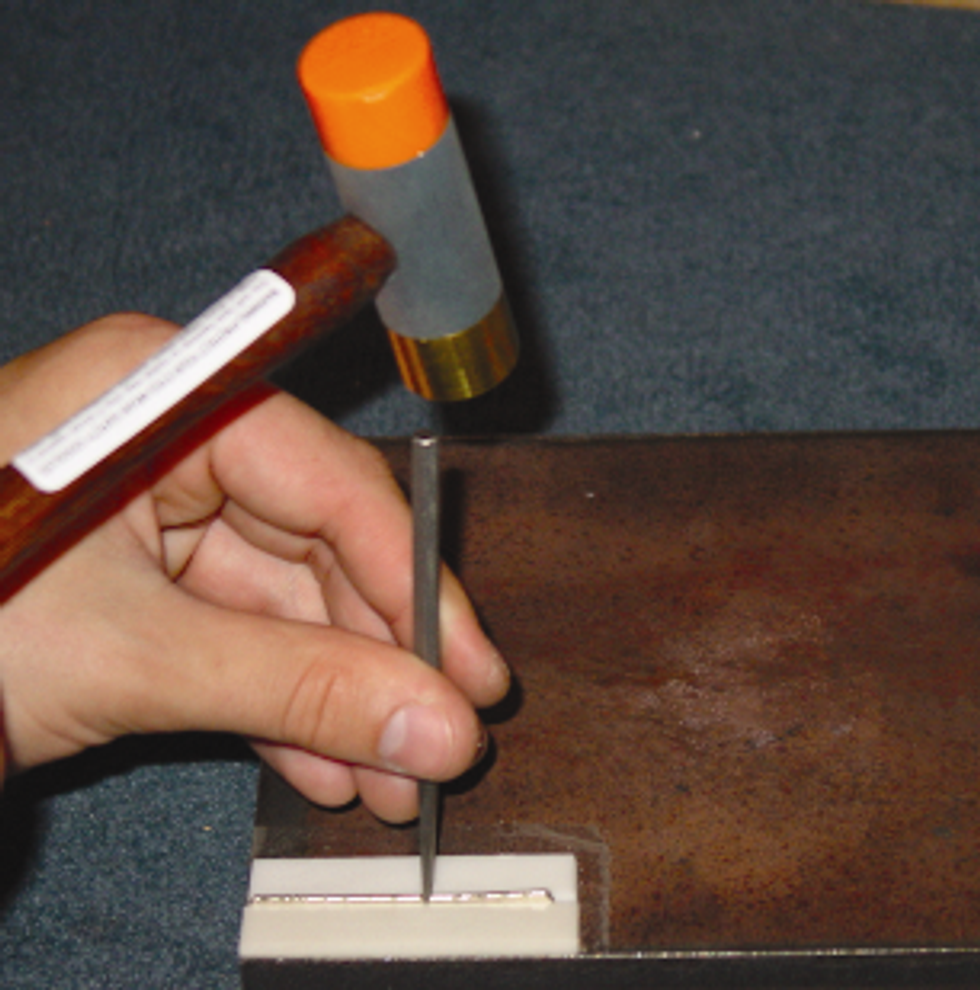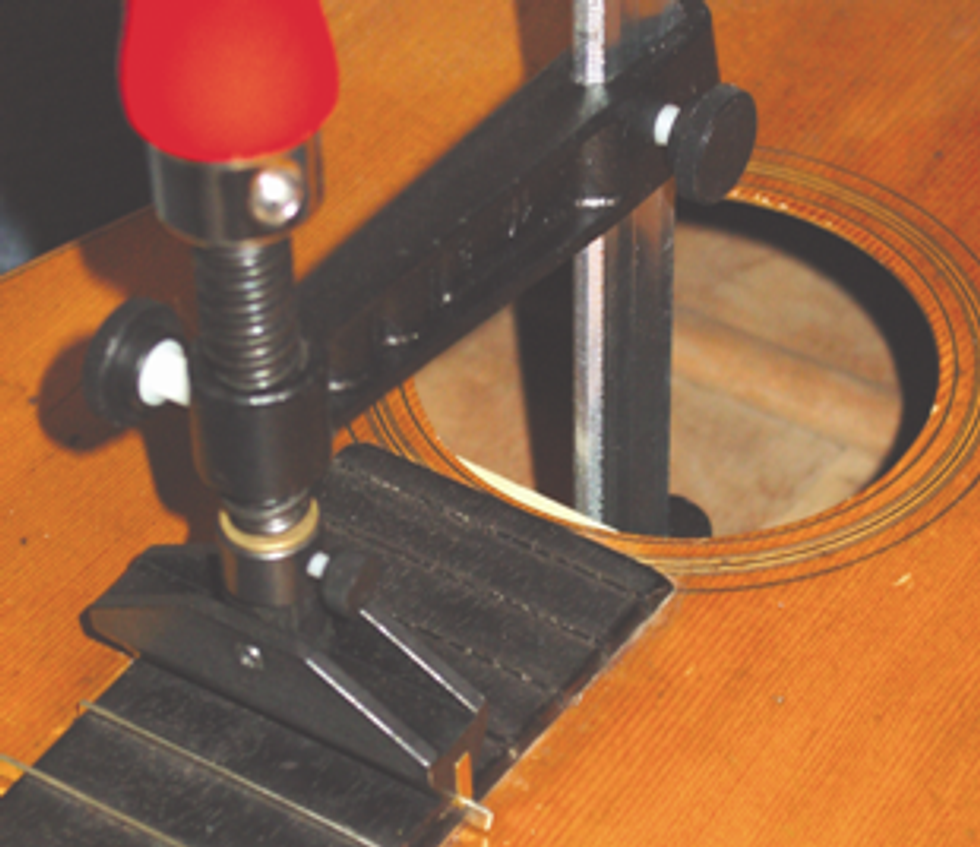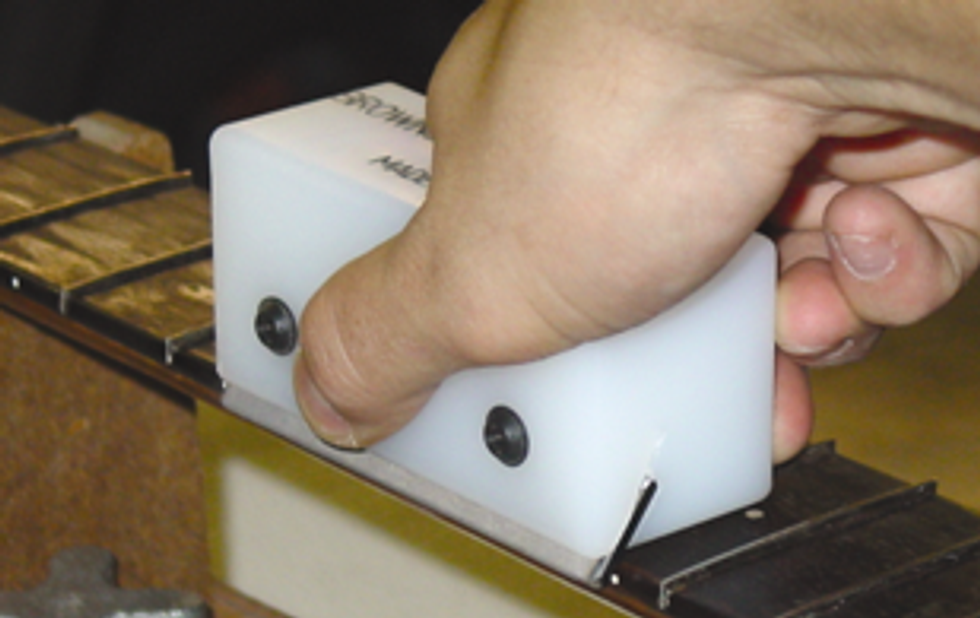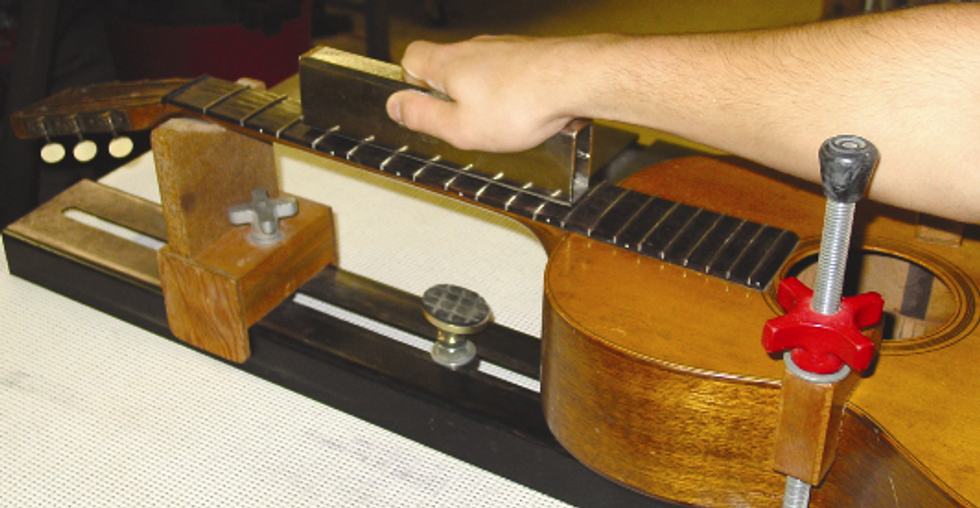John concludes his restoration of a vintage Martin
Over the last few months, we’ve taken an enjoyable and in-depth look at the process of restoring a 1921 Martin 0-18. Last month, I began installing bar fretwire using a variety of must-have tools to help this procedure go as smoothly as possible. Tools like Stewart- McDonald’s Relief Gauge – with a cool indicator dial to measure neck compression – and Jaws 1, 2 and 3 – which eased the process of refretting – definitely help provide a comfortable, low-stress work area. There was a time when I thought just a hammer and chisel would do, but today I have come to the conclusion that using the best tools available will help me do the most perfect job possible. I still believe that an individual’s skill and talent will come into play, no matter which hand tool he or she decides to use – even if you’re lucky enough to have a CNC machine, you still need to have magic in your fingertips to produce a perfect guitar. Nevertheless, a good tool can make the toughest jobs easier.
 |
I chose to use .050 and .051 bar fretwire from Martin for the refretting process (check out the past two “Restoring an Original” columns for more on this). There were a couple of techniques used to manipulate the wire that I’d like to elaborate on. Mashing the fret on a slab of hardox tool steel with an 8- ounce hammer aided in thinning out the fret for the more narrow fingerboard slots.
Some of the fingerboard fret slots were wider than .051, making for a sloppy fit; for these frets, I created a simple jig, using a couple of 1/8” tall Corian strips double stuck to my slab of hardox steel to hold and support the fret in place. I then used a 1/4” point cold chisel with a hammer to etch the underside of the fret, pushing metal mass out of the side and thus widening the lower outer walls. The 1/4” point cold chisel leaves the exact same prints as found on the original frets – a perfect match.
 |
I’d like to share a little more about the usage of Jaws 2. This tool was used to gently press in the frets along the fingerboard tongue, which is usually over an unsupported acoustic guitar top. With Jaws 2’s special soundhole cauls and a self-leveling upper caul, it takes the stress off the guitar top so you can safely press the frets into place. This tool has gotten a lot of usage in our shop whenever an acoustic needs refretting.
Securing and Leveling
Once the frets were seated, I did a final secure by using Stew-Mac’s thin viscosity Super Glue in the seam of the fret slot. The drop-fill toothpicks (#3110) work very well for applying glue. Remember, a little goes a long way.
 |
Once all the fretwork was complete, it was time for the final mojo (upon customer request): a new set of Waverly guitar tuners. These are available from Stew-Mac and feature a wide range of knobs to choose from. It was like topping off a well-made sundae with a cherry.
 |
It has been my pleasure to share my restoration of this 1921 Martin 0-18 with you over the last few months. If anyone has any unanswered questions about the restoration of this vintage instrument, please don’t hesitate to email me. I hope you’re looking forward to seeing what’s on the bench for next month’s “Restoring an Original.” Thanks for your support and appreciation.
- John
John Brown
John Brown, of Brown''s Guitar Factory, is the inventor of the Fretted/Less bass. He owns and operates a full guitar manufacturing and repair/restoration facility, which is staffed by a team of talented luthiers. He is also the designer of guitar making/repair tools and accessories that are used today by instrument builders throughout the world.
www.brownsguitarfactory.com
info@brownsguitarfactory.com

